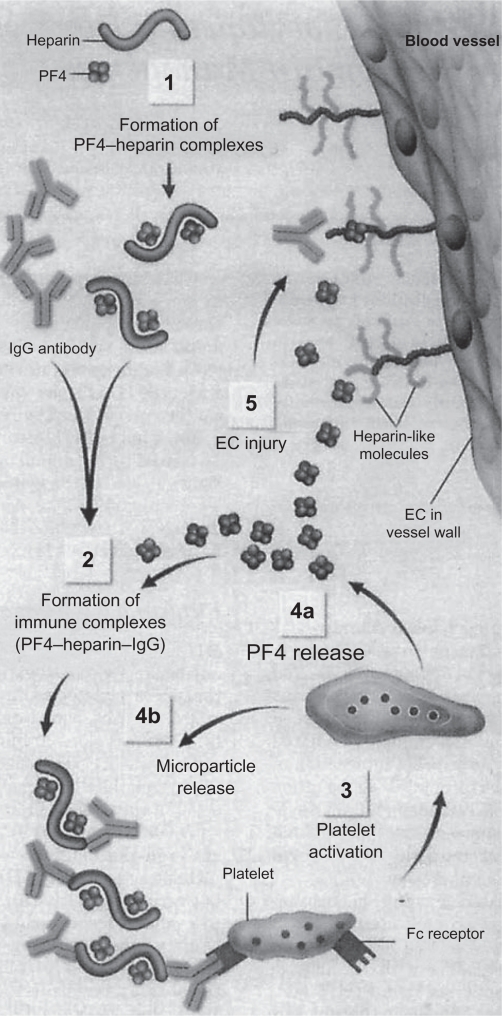Figure 1.
Pathogenesis of HIT: Heparin binds with PF4, which exposes neoepitopes on PF4 and leads to antibody production (1). Heparin–PF4–IgG immune complexes form (2), and IgG in the multimolecular complex triggers platelet activation via binding to Fc receptors (3). Activated platelet releases additional PF4 (4a) and prothrombotic platelet microparticles (4b), which enhance coagulation reactions. Thrombotic risk is further promoted by the binding of PF4 to heparin-like molecules (heparin sulfate molecules) on EC, contributing to antibody-mediated endothelial injury (5).
Reprinted with permission from Jang IK, Hursting MJ. When heparins promote thrombosis: review of heparin-induced thrombocytopenia. Circulation. 2005;111: 2671–2683.3 Copyright © 2005 Wolters Kluwer Health.
Abbreviations: HIT, heparin-induced thrombocytopenia; PF4, platelet factor 4; EC, endothelial cells.

